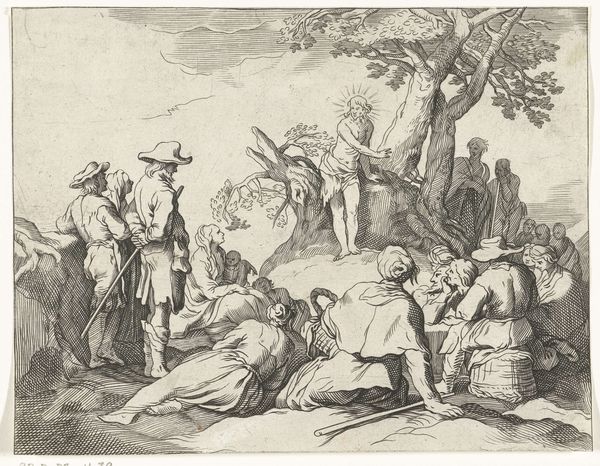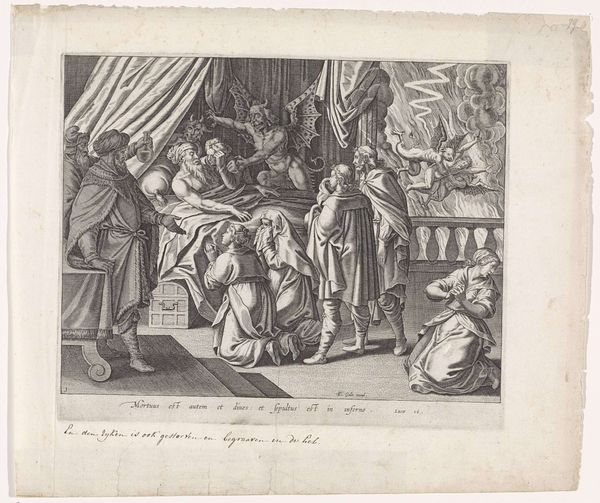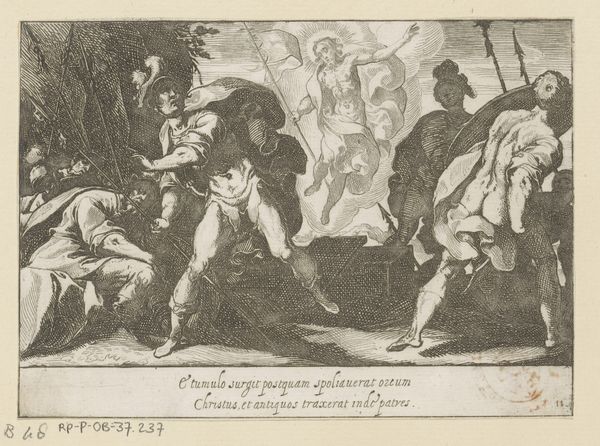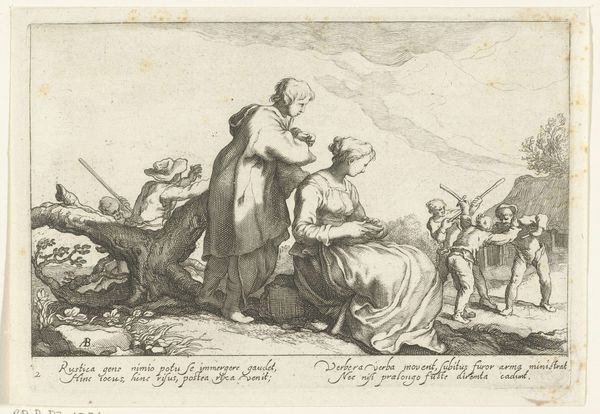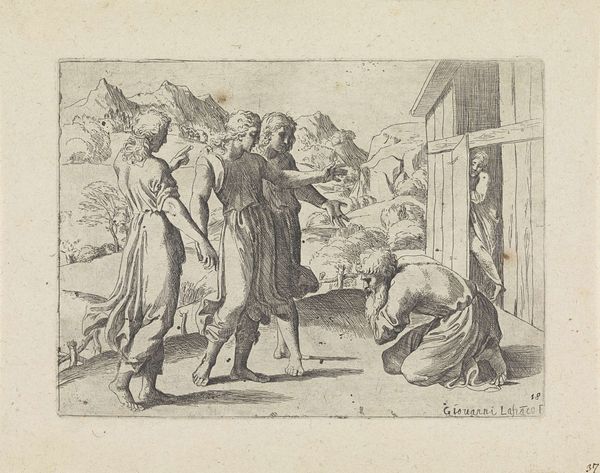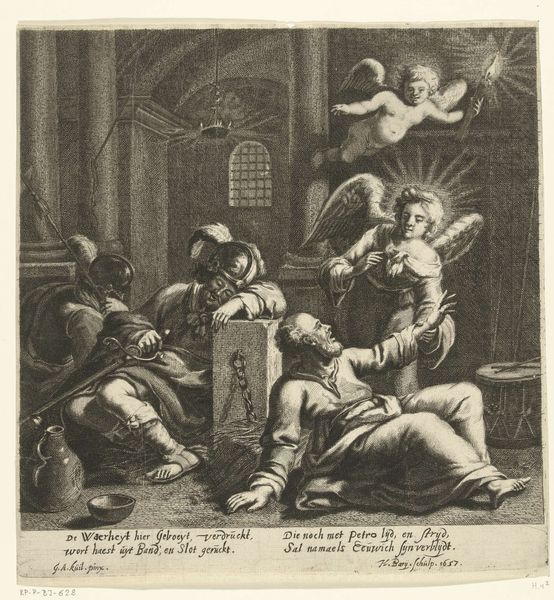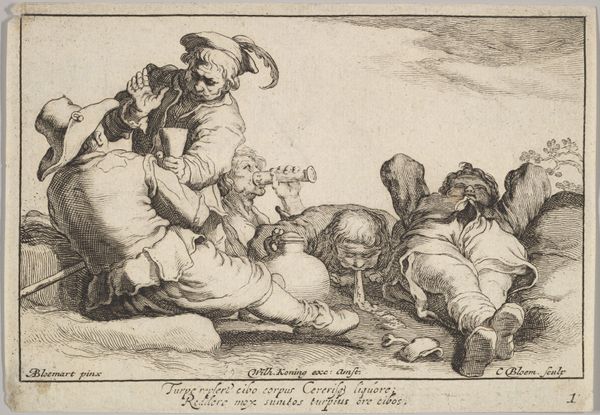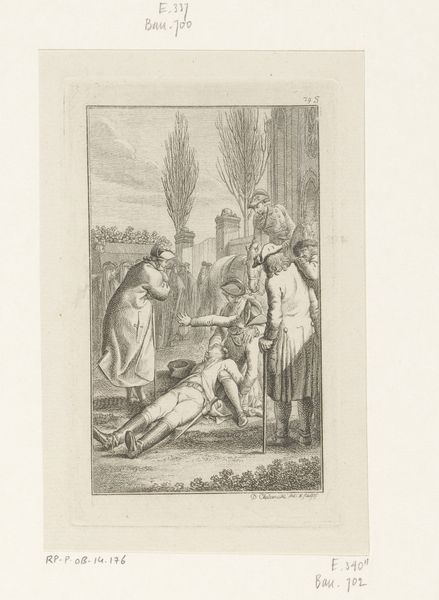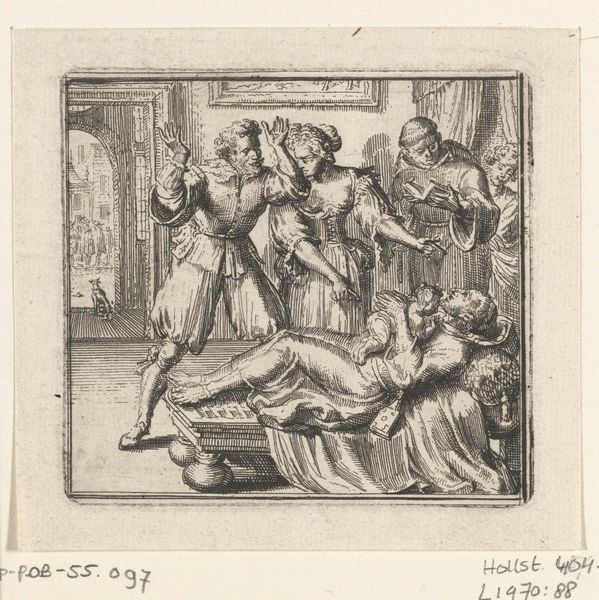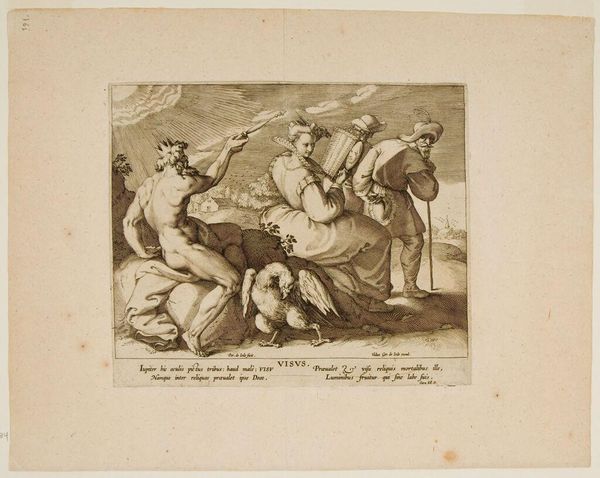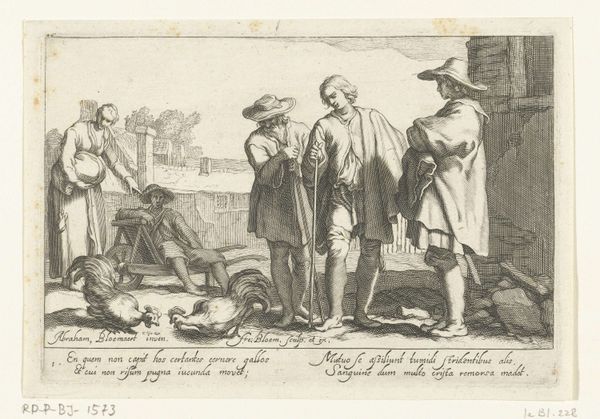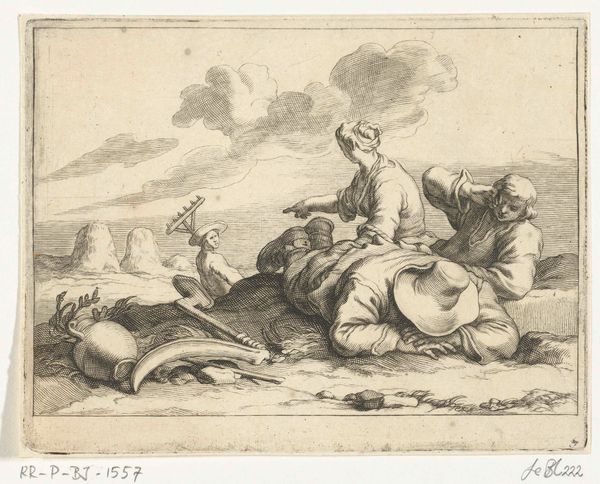
print, etching, engraving
#
narrative-art
#
baroque
# print
#
etching
#
landscape
#
figuration
#
line
#
genre-painting
#
engraving
Dimensions: height 120 mm, width 184 mm
Copyright: Rijks Museum: Open Domain
Curator: Frederick Bloemaert produced this engraving and etching entitled "Koken in de buitenlucht," placing its creation somewhere between 1632 and 1670. It’s currently held in the Rijksmuseum. Editor: My immediate impression is one of rustic leisure. There's a sense of casual comfort, despite the somewhat crude cooking arrangement and the hard ground. Curator: "Rustic leisure" is a great way to put it. Consider that in the context of the Dutch Golden Age, prints like these weren't just images. They circulated ideas, representing daily life but also broader societal values. Think about how prints were a major vehicle for distributing information at the time. Editor: It's striking how the artist uses light and shadow. The firelight casts dramatic shadows, particularly on the seated figure, drawing my eye there immediately. What does that say about their social standing, or perhaps, even the narrative’s focus? Curator: Perhaps. While these groupings often evoke images of peasant life, there is a conscious construction involved. Notice how the figures' clothes, while not lavish, still hold a certain amount of detail. Bloemaert likely intended the scene to resonate with a more educated audience, using "common" imagery to discuss larger social matters. Editor: And what about the cooking pot itself? It looks like a simple, everyday item, but even humble objects can carry considerable weight. Cooking and food are fundamental needs, after all. This scene highlights themes of communal sustenance and shared experience. Curator: Indeed. Consider also the location: "in de buitenlucht", outdoors, implies freedom but also the lack of structural stability. Editor: That outdoor setting also lends an element of timelessness. While specific details place it in a particular historical period, the themes of food, rest, and human interaction feel eternally relevant. This print is not just a historical record; it’s a reflection of enduring human experiences. Curator: Absolutely. And the choice of etching, combined with engraving, demonstrates a canny sense of materiality, as well as an effort to convey something of this enduring quality of rustic life through form as well as content. Editor: It certainly does, as the light and shadow interact here with potent and persuasive effect.
Comments
No comments
Be the first to comment and join the conversation on the ultimate creative platform.
